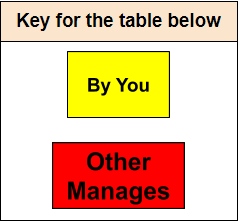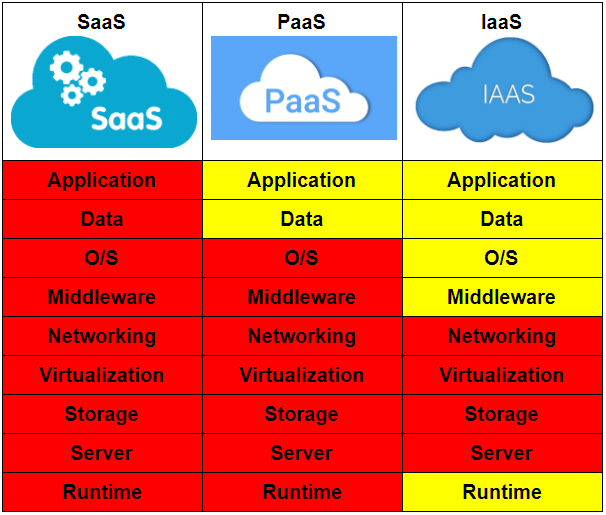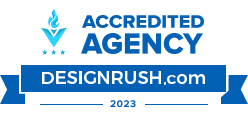The cloud being an interesting topic all the way beginning from small businesses to global enterprises, remains a wide idea that covers a lot of online possession. In our previous blog, we compared the cloud platforms falling under these cloud computing models. Before you make up your mind to flip your business to the cloud, for whatsoever reason it is essential to know and compare the cloud services: IaaS, PaaS, and SaaS.
Frequently three main models of cloud service you need to compare and research about are: Software as a Service (SaaS), Platform as a Service (PaaS), and Infrastructure as a Service (IaaS). Every model has its known limitations and advantages. So before you make this big switch it is really important to understand about each one of them to decide which model SaaS vs. PaaS vs. IaaS is the perfect fit for your business.
Table of Content
1. Key comparison between SaaS vs. PaaS vs. IaaS
2. Infrastructure as a Service (IaaS)
3. Platform as a Service (PaaS)
4. Software as a Service (SaaS)
5. Which solution is best suited for your business
6. Conclusion
Key comparison between SaaS vs. PaaS vs. IaaS
Check out this key comparison between SaaS vs. PaaS vs. IaaS to compare the attributes managed by you and others.


Difference Between IaaS PaaS And SaaS
1. Infrastructure as a Service (IaaS)

IaaS provides online access to SERVICES like networking systems, data storage, and cloud servers to manage projects and manage systems. IAAS recognizes through virtualization, without developing and maintaining your infrastructure. In other words, it is just like renting a physical server, only on the internet. It provides the advantage of getting the most significant height of personalization, regulation of infrastructure.
Advantages of IaaS
Let’s understand various benefits of using IaaS:
- IaaS is termed as the most workable cloud computing model
- It is simple and easy to automate deployment of storage, networking, servers, and processing power
- IaaS helps in Hardware purchasing based on consumption
- Users have full control of their infrastructure
- Resources can be purchased as and when needed
- IaaS model is highly ascendable
Limitations of IaaS
There are many common limitations between IaaS, PaaS, and SaaS. Cost overrun is one of them which is common between all the models. Limitations to IaaS include:
- Security – While the user is in control of the apps, data, middleware, and the OS platform, security threats can still be sourced from the host or other virtual machines (VMs). Insider threat or system in jeopardy may reveal data communication between the host infrastructure and VMs to unsanctioned organizations.
- Legacy systems operating in the cloud – While customers can run legacy apps in the cloud, the infrastructure may not be designed to deliver specific controls to secure the legacy apps.
- Internal resources and training – Additional resources and training may be needed for the workforce to learn how to efficiently run the infrastructure. Users will be responsible for data security, backup, and business continuity. Monitoring and management of the resources may be difficult without proper training and resources available in house.
- Multi-tenant security – Since the hardware resources are actively allocated across users as made available, the vendor is required to ensure that other users cannot access data dumped to storage assets by previous users. Similarly, customers must rely on the vendor to ensure that VMs are acceptably secluded within the multi-tenant cloud architecture.
- Data security – Companies can run their own apps and services using IaaS, but the data in third-party, https://www.physionow.ca/generic-valium/ vendor-controlled cloud servers poses security risks and concerns.
- Vendor lock-in – Business and technical requirements that drive decisions for a specific IaaS solution may not apply in the future. If the vendor has not provisioned convenient migration policies, switching to alternative IaaS options may not be possible without affecting the business.
- Tailoring issues – IaaS may not be a plug-and-play solution for existing apps and services. Instead, several tailoring and configuration changes may be necessary for systems to work with the IaaS service.
2. Platform as a Service (PaaS)

PaaS is a prepared programming condition for creating and sending applications. It gives you the necessary tools for the specific configuration of the developed environment: working frameworks, hardware, middleware, information bases, and instruments for testing and coding. It provides you with dynamic advantages and thus is one of the crucial components for making eCommerce apps. But you will still need web developers. This cloud storage is perfect for software development companies and developers, provided you have the required resources.
Advantages of PaaS
Irrespective of the size of companies , PaaS offers array of advantages:
- Easy, cost-efficient development and deployment of apps
- Accessible
- Developers can customize apps without worrying about maintenance of software
- Noticeable reduction in the amount of coding needed
- Automation of business policy
- Easy migration to the hybrid model
Limitations of PaaS
- Data security – Companies can run their own apps and services using PaaS, but the data in third-party, vendor-controlled cloud servers poses security risks and concerns.
- Integrations – The complexity of connecting the data stored within an onsite data center or off-premise cloud is increasingly affecting the services apps that can be adopted by PaaS offering.
- Vendor lock-in – Business and technical requirements that drive decisions for a specific PaaS solution may not apply in the future. If the vendor has not provisioned convenient migration policies, switching to alternative PaaS options may not be possible without affecting the business.
- Tailoring of legacy systems – PaaS may not be a plug-and-play solution for existing legacy apps and services. Instead, several tailoring and configuration changes may be necessary for legacy systems to work with the PaaS service.
- Runtime issues – In addition to limitations associated with specific apps and services, PaaS solutions may not be optimized for the language and frameworks of your choice.
- Operational limitation – Customized cloud operations with management automation workflows may not apply to PaaS solutions, as the platform tends to limit operational capabilities for end users.
3. Software as a Service (SaaS)

Software as a Service portrays the product given over the web as assistance and membership. SaaS solutions are the best justifiable substitutes for time-sensitive businesses that cannot prepare their infrastructure to create and range the applications. Using a SaaS solution is the best decision if you are working for short term collaborations.
Advantages of SaaS
Use of SaaS provides a lot of advantages. It reduces the time and investment on unvaried tasks like installing management and software upgradation. This helps employees and companies to a great extent since it provides them time technical stuff and gives them allowance to spend on various essential matters and issues within the organization.
Limitations of SaaS
- Conformity – Amalgamation with existing apps and services can be a problem if the SaaS app is not modified to follow open standards for integration. In this case, companies may need to design their own integration systems or reduce reliance with services, which may not always be ethically possible.
- Vendor lock-in – Vendors may find it easy to join the service but get stuck while getting out. For instance, the data may be importable for some reason across SaaS apps from other vendors without sustaining notable cost or other reason.
- Lack of integration support and control – Many organizations integrate with on-premise apps, data, and services. The lack of integration support may lead to building pressure on organizations to invest internal resources in designing and managing integrations. The compoundness of integrations can further limit how the SaaS app or other dependent services can be used. SaaS ends up providing its control to third-party service providers. Customers may thus need to redefine their data security and governance models to fit the requirements of the SaaS service.
- Data security – In order to perform the essential software functionality, exchange of backend data centres in large volumes of data may have taken place. Transferring sensitive business information to public-cloud based SaaS service may result in splitting the difference in security and assent in addition to notable cost for transfering large data workloads.
- Customization – SaaS apps offer minimal customization capabilities. Since one size doesn’t fit all solutions , users may be limited to specific functionality, performance, and integrations provided by the vendor.
- Feature limitations – SaaS apps often come in a particular form, this limits the choice of features compromising tradeoff against security, cost, performance, or other policies.
- Performance and downtime – The vendor controls and manages the SaaS service, thus users are reliable on vendors to maintain the service’s security and performance. Planned and unplanned maintenance, cyber-attacks, or network issues may impact the performance of the SaaS app despite adequate service level agreement (SLA) protections in place.
Which Solution is Best Suited For Your Business?
Factor | IaaS | PaaS | SaaS |
Usability |
|
|
|
Example | Google GSuite (Apps), Dropbox, Salesforce, Cisco WebEx, SAP Concur, and GoToMeeting. |
Conclusion
Each cloud model has specific characteristics , advantages, disadvantages, and functionalities. It is very important for your company to understand the differences. You have to choose depending upon the need and requirements of your company after understanding which model provides what. Which so ever option you may choose, migrating to the cloud is the future of business and technology.
About Logicsofts: Logicsofts is a IT service provider doing a range of services like professional website design and SEO service, Mobile Apps development, Digital marketing, IT consultancy, website management support, cloud services, etc at astoundingly affordable prices. Speak to our specialist for more information: +4402079935898
Author Bio
Abhay is a Digital Marketing Guru and an accomplished entrepreneur with an experience of a decade working with various businesses varying from startups to established brands. He co-founded many companies like Logicsofts, PrintYo, CrazyRise and more. He is passionate about SEO and Online Data Analytics, which plays a vital role in any business to grow and mutate as per the data results.
Follow me on LinkedIn, Facebook and Instagram

